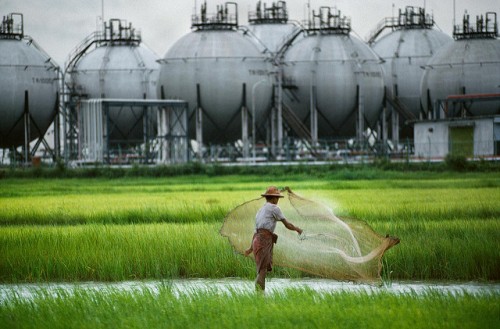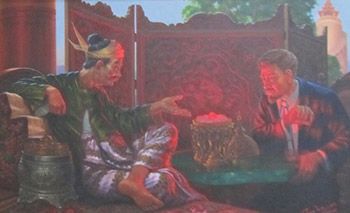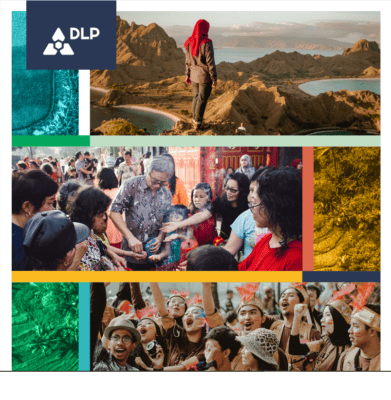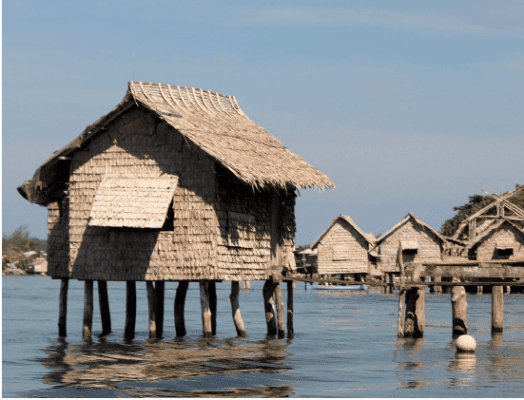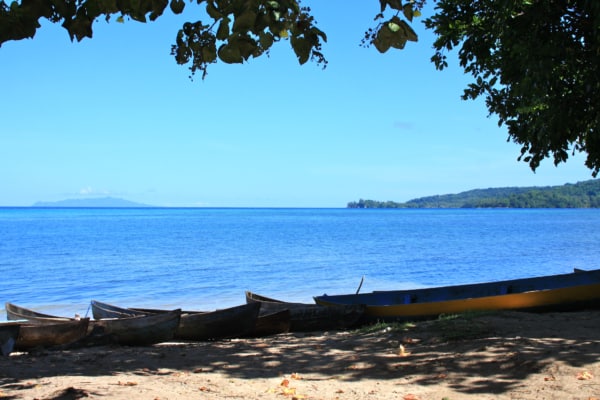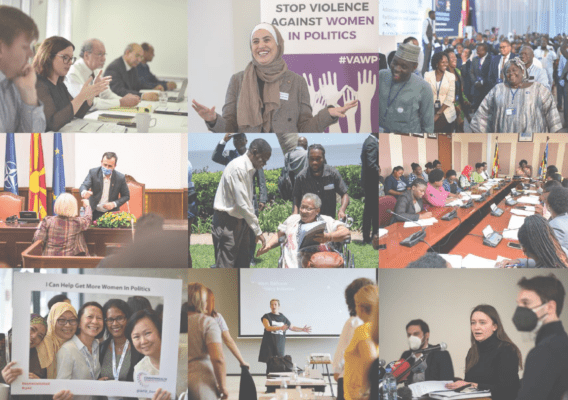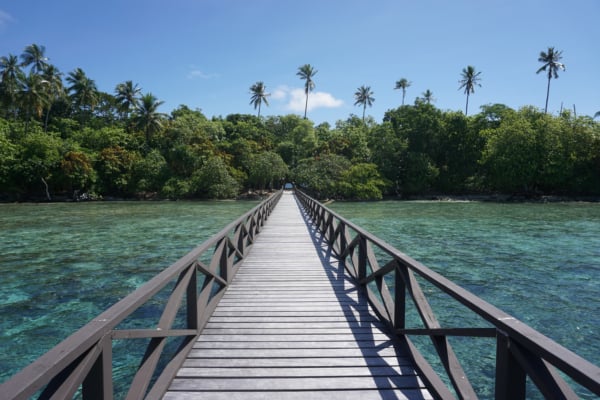Image: Oil refinery in Myanmar (Steve McCurry).
A large oil painting hangs in the formal reception room of Myanmar’s Ministry of Mines. A powerful and confident 19th century Burmese senior civil servant shows a pot full of rubies to a covetous foreign trader. Glowing at the centre of the pot is the Padamyar Ngamauk or the ‘royal ruby’—the massive and flawless ruby that was the pride of the royal treasury.
Like all visitors to the Ministry, I was obliged to sit in front of it as I waited for a meeting with officials. I wondered what the intended message was. Candid pride in Myanmar’s history? An advertisement for Myanmar’s plentiful mineral wealth? Or a more subtle reminder that the Burmese could be formidable negotiators?
Regardless of its intent, the painting is a reminder of how Myanmar’s natural resource wealth is tangled up with its sometimes tragic history. Its minerals and gemstones, its oil and gas and its timber helped to finance the British raj and to bankroll the predatory military regime that replaced colonial rule. Resource wealth has also fuelled all sides of the county’s protracted civil wars. Even as Myanmar’s economy stagnated and public services collapsed in the 1990s and 2000s, resource rents continued to make its generals and their business cronies rich. In 2013 Myanmar was in last place on the Resource Governance Index which measures the quality of governance in the oil, gas and mining sectors.
Myanmar is, of course, changing rapidly. In 2011, the country’s ruling generals swapped their uniforms for suits and launched a series of fundamental political and economic reforms. In November 2015, open democratic elections gave a landslide victory to Aung San Suu Kyi’s National League for Democracy (NLD). And today a civilian president took office for the first time in more than fifty years.
Improving resource governance is a fundamental challenge for the country’s reformers. Myanmar’s agreement to join the Extractive Industries Transparency Initiative (EITI) in late 2012 marked a first step on this journey. The EITI is a global standard that promotes open and accountable management of extractive resources. Its aim is to ‘strengthen government and company systems, inform public debate, and enhance trust. In each implementing country it is supported by a coalition’ of government, companies and civil society working together.
In January this year, Myanmar submitted its first EITI report. This aims to reconcile data on revenues, taxes and licences provided by extractives companies with data provided by the relevant government ministries and bodies. The objective is transparency: how much do companies pay for access to resources and how much does the government receive?
The report is a highly technical read with a seemingly narrow remit. Yet simply having information about Myanmar’s natural resources formally set out in writing is a substantial departure from past government and private sector behaviour. It marks a level of disclosure about companies and government that would have been unthinkable a few years ago. But the process behind the report matters even more.
In a new DLP paper, I apply a political economy lens to Myanmar’s EITI process. I look at the actors, incentives and contests that have shaped EITI implementation so far and explore what this means for Myanmar’s overall prospects for reform, and emerging lessons also relevant in other contexts. I pay particular attention to the multi-stakeholder group (MSG) that lies at the heart of the EITI process. The MSG has—for the first time in Myanmar’s history—brought government, business and civil society actors to the table to collectively address resource governance. This is not just symbolically significant; it has the potential to set a precedent for how Myanmar’s new government, its private sector and its civil society interact in the future.
Civil society members of this group have been able to maximise and expand the space provided by the MSG to increase both the breadth and depth of Myanmar’s EITI:
- At an early stage, they sought to stretch the EITI process to include a broader range of resources such as jade and gemstones.
- They also fought to include data not just about the production but also the transhipment of oil and gas—a key source of government revenue and a source of significant controversy in a country in which most people remain energy-poor.
- They have successfully lobbied for a feasibility study into the monitoring of hydropower revenues—something that hasn’t been attempted in other EITI countries.
- They have pushed for and won a commitment to map the beneficial ownership of extractive sector companies in Myanmar, a crucial step in exposing the network of international elites, military interests and business cronies that have a stake in them.
- Local groups have pressured the MSG to look beyond only national level reporting and to pilot state and regional level processes—bringing the process to the level of those who are most directly affected by resource extraction.
- They have used the MSG as a platform to voice and seek redress for a broad range of past and present human rights and resource governance grievances.
These are jobs that the EITI process was never designed to do. There were moments where it seemed that key actors would leave the table, where deadlines would lapse. Yet in the end the MSG held together and Myanmar has made some tentative steps towards greater transparency. Myanmar’s citizens have had little chance for public debate over the past half century, yet it seems that perhaps the national gift for tough yet productive negotiation hinted at in that Ministry of Mines painting has survived.
Development practitioners often stress that coordination and cooperation are at the heart of improving governance and transparency. Establishing trust and collaboration among government, business and civil society has indeed been important in Myanmar’s EITI process. As Myanmar’s new democratically elected government takes office, the EITI process and the MSG provide a key platform for the strong working relations with both civil society and the private sector that will be essential if the government’s ambitious reforms are to gain traction.
Yet progress in Myanmar’s EITI has come as much from contestation as it has from collaboration: the Myanmar case shows that for multi-stakeholder initiatives more adversarial approaches can be a potent ingredient in the mix that delivers results.

